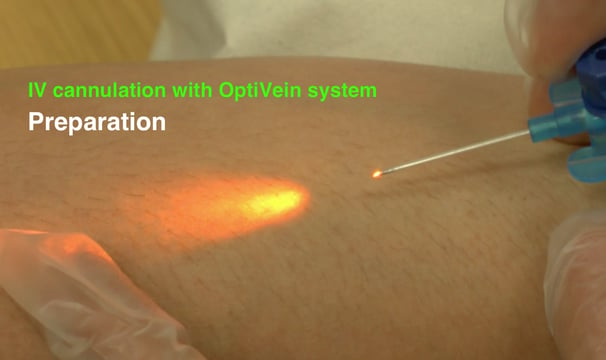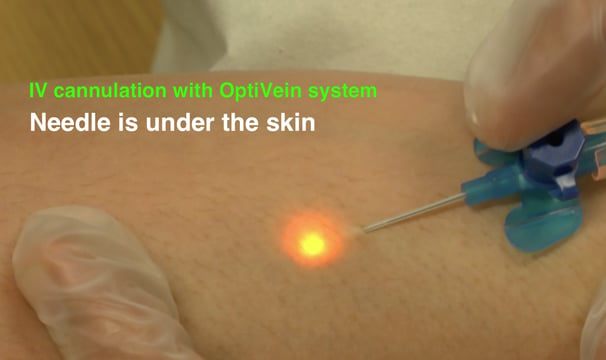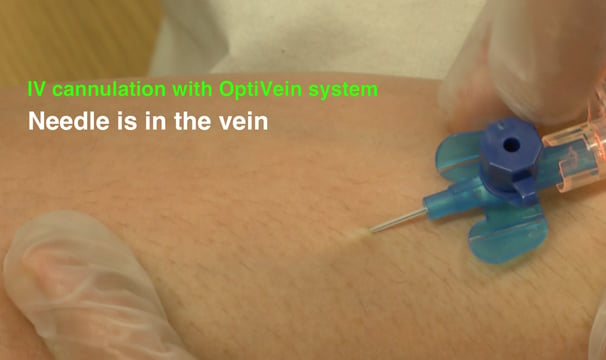OptiVein Technology
The OptiVein system informs the clinician of the exact moment of penetration of the tip of the needle into the blood vessel.


Preparation
The Optivein system significantly reduces IV insertion failures through precise skin transillumination, ensuring accurate detection of needle penetration into blood vessels for improved patient outcomes.


Insertion


Success
The instant disappearance of tissue illumination indicates successful insertion.
Hemoglobin in blood strongly absorbs visible light of specific wavelengths, so when the needle enters the blood vessel, the light is instantly absorbed by blood, which causes instant fading of skin transillumination. The instant disappearance of tissue illumination indicates successful insertion. This optical confirmation comes much faster than the traditional observation of blood in the flashback chamber of the needle, which informs clinician to stop forward movement of the needle, thus increasing successful cannulation rate and decreasing complications.
Considerable lag time between the needle tip entering the target vessel and the blood flash indicator appearing in the flashback chamber is one of the main reasons of cannulation failures, especially during cannulation of children as well as patients with small and fragile veins or low blood-pressure.
The electronic unit generates visible light, which is released from the tip of the needle into the soft tissue around the tip of the needle. The tip of the needle is visible through the skin. The clinician can advance the needle towards target vein with precision.


Enhanced IV success
Technology
Enhancing intravascular cannulation success with Optivein.
Innovation
Success
info@optoven.com
+358400296767
© 2025. All rights reserved.
